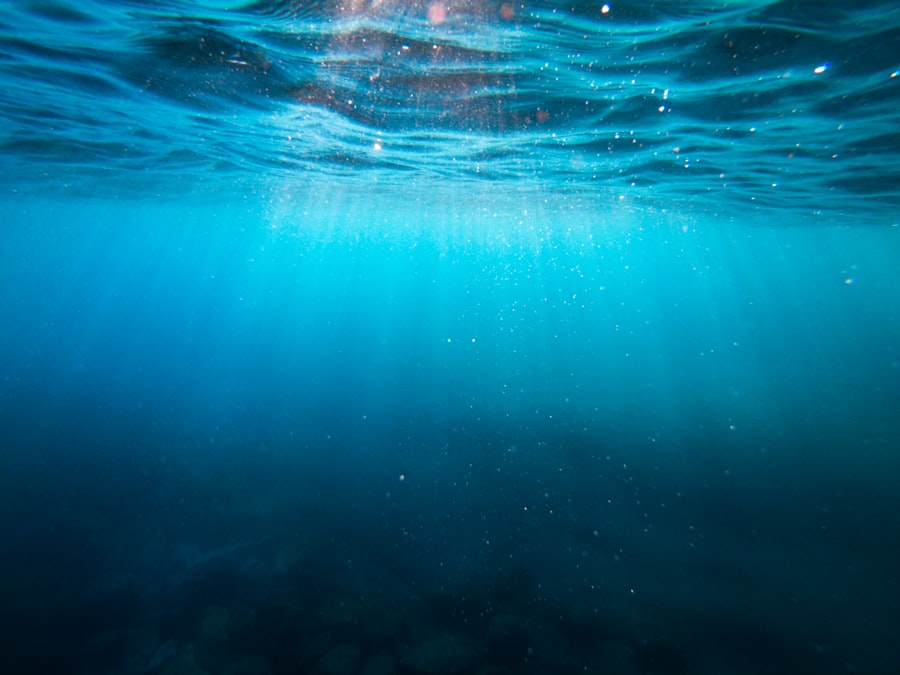Download links
How to install Exploring the Shallow Sea: A Diver's Adventure APK?
1. Tap the downloaded Exploring the Shallow Sea: A Diver's Adventure APK file.
2. Touch install.
3. Follow the steps on the screen.
Description
Shallow sea diving offers a unique and enchanting experience that captivates both novice and seasoned divers alike. The allure of exploring underwater ecosystems just beneath the surface is undeniable. Unlike deeper dives, shallow waters often boast vibrant colors and an abundance of life, making them a perfect playground for those looking to immerse themselves in the aquatic world without the complexities associated with deeper dives.
The sunlight penetrates these waters more effectively, illuminating the corals and marine flora, creating a kaleidoscope of colors that dance before the diver’s eyes. This natural light enhances visibility, allowing divers to appreciate the intricate details of marine life and underwater landscapes. Moreover, shallow sea diving often takes place in locations that are easily accessible, such as coastal reefs, lagoons, and estuaries.
These areas are not only rich in biodiversity but also provide a sense of tranquility that is hard to find in deeper waters. The gentle lapping of waves and the soft sounds of marine life create a serene atmosphere that invites divers to relax and enjoy their surroundings. The experience is often enhanced by the opportunity to observe marine life in its natural habitat, from schools of fish darting through coral formations to the graceful movements of sea turtles gliding effortlessly through the water.
This intimate connection with nature fosters a deep appreciation for the ocean’s beauty and its delicate ecosystems.
Key Takeaways
- Shallow sea diving offers stunning views of colorful coral reefs and crystal-clear waters
- Divers can encounter a diverse range of marine life, including tropical fish, sea turtles, and vibrant sea plants
- Tips for shallow sea diving include proper equipment maintenance, staying aware of your surroundings, and practicing good buoyancy control
- Exploring shipwrecks and underwater caves can provide a thrilling and unique diving experience
- Safety precautions for shallow sea diving include checking weather conditions, diving with a buddy, and being mindful of your air supply
- Shallow sea diving can have a negative impact on the environment if not done responsibly, so it’s important to follow sustainable diving practices and avoid damaging marine life
The Marine Life You’ll Encounter
Vibrant Tropical Reefs
In tropical regions, divers can expect to be surrounded by vibrant coral reefs teeming with life. The explosion of colors from parrotfish, clownfish, and angelfish swimming among the corals is a breathtaking sight.
Fascinating Relationships
The intricate relationships between these species and their habitats are fascinating. For example, clownfish have a symbiotic relationship with sea anemones, providing protection for both species while creating a stunning visual display.
Temperate Waters and Unique Ecosystems
In temperate waters, the marine life may differ significantly but is no less captivating. Divers might encounter kelp forests where sea otters play and harbor seals frolic. The unique ecosystems found in these environments support a variety of species, including colorful nudibranchs and vibrant sea stars. Each dive can reveal new surprises, as the changing tides and seasons bring different species to the forefront. Observing these creatures in their natural habitat not only provides a sense of wonder but also highlights the importance of conservation efforts to protect these fragile ecosystems.
Tips for Shallow Sea Diving

To make the most of your shallow sea diving experience, preparation is key. First and foremost, it is essential to choose the right equipment. A well-fitting wetsuit or drysuit can enhance comfort and warmth, especially in cooler waters.
Additionally, using a mask with a good seal will improve visibility and allow for a more enjoyable experience. Fins should be chosen based on the type of diving you plan to do; shorter fins may be more suitable for navigating tight spaces around reefs, while longer fins can provide more power for swimming in open water. Another important tip is to familiarize yourself with the dive site before entering the water.
Researching the area can provide insights into the types of marine life you may encounter and any specific features of the underwater landscape. Many popular dive sites have established guidelines or maps that can help divers navigate safely. Additionally, consider joining a guided dive with a local expert who knows the area well; they can offer valuable information about the best spots to see marine life and ensure that you are diving safely and responsibly.
Exploring Shipwrecks and Underwater Caves
| Location | Depth | Number of Shipwrecks | Number of Underwater Caves |
|---|---|---|---|
| Caribbean Sea | 20-40 meters | over 100 | 15 |
| Mediterranean Sea | 10-30 meters | over 200 | 25 |
| Great Barrier Reef | 10-25 meters | over 50 | 10 |
Shallow sea diving opens up exciting opportunities for exploring shipwrecks and underwater caves, both of which offer a glimpse into history and nature’s transformative power. Shipwrecks are often found in shallow waters, where they become artificial reefs over time, attracting marine life and creating unique ecosystems. Diving around these wrecks allows divers to witness how nature reclaims human artifacts, with corals growing on metal structures and schools of fish making their homes within the wreckage.
For example, the famous wreck of the USS Oriskany off the coast of Florida has become a thriving habitat for various marine species since it was sunk intentionally as an artificial reef. Underwater caves present another thrilling aspect of shallow sea diving. These submerged passages can be found in coastal areas and often feature stunning rock formations, stalactites, and unique aquatic life adapted to cave environments.
Exploring these caves requires careful planning and awareness of potential hazards such as low visibility or strong currents. However, for those willing to venture into these mysterious underwater realms, the rewards can be breathtaking. The interplay of light filtering through openings in the cave can create ethereal scenes that are both haunting and beautiful.
Safety Precautions for Shallow Sea Diving
While shallow sea diving is generally considered safer than deeper dives, it is crucial to adhere to safety precautions to ensure a safe and enjoyable experience. One fundamental rule is to always dive with a buddy. Having a partner not only enhances safety but also enriches the experience through shared exploration and discovery.
Establishing clear communication signals before entering the water can help ensure that both divers are aware of each other’s needs and intentions throughout the dive. Additionally, monitoring your air supply is essential even in shallow waters. Divers should regularly check their gauges to avoid running low on air unexpectedly.
Understanding local conditions such as tides, currents, and weather patterns is equally important; these factors can significantly impact visibility and safety during a dive. By being well-prepared and informed, divers can minimize risks and fully enjoy their underwater adventures.
Environmental Impact of Shallow Sea Diving

The environmental impact of shallow sea diving is a topic that warrants careful consideration as more people engage in this recreational activity. While diving can foster appreciation for marine ecosystems, it can also pose threats if not conducted responsibly. One significant concern is coral damage caused by careless divers who may inadvertently kick or touch fragile coral formations while exploring.
Coral reefs are incredibly sensitive ecosystems that take years to recover from physical damage; thus, it is vital for divers to practice buoyancy control and avoid direct contact with corals. Moreover, littering or leaving behind equipment can have detrimental effects on marine life. Items such as fishing lines or plastic waste can entangle or harm aquatic creatures, disrupting local ecosystems.
Divers should always adhere to the principle of “leave no trace,” ensuring that they remove any trash they encounter during their dives. Engaging in conservation efforts, such as participating in underwater clean-up events or supporting organizations dedicated to marine protection, can further mitigate the environmental impact associated with diving activities. In conclusion, shallow sea diving offers an extraordinary opportunity to explore vibrant underwater worlds filled with diverse marine life while also presenting unique challenges and responsibilities for divers.
By understanding the beauty of these environments, respecting their fragility, and adhering to safety practices, divers can enjoy enriching experiences while contributing positively to ocean conservation efforts.
FAQs
What is shallow sea diving?
Shallow sea diving refers to the activity of diving in relatively shallow waters, typically up to 40 feet deep. It is popular among beginner and intermediate divers due to the shallower depths and generally calmer conditions.
What are the benefits of shallow sea diving?
Shallow sea diving allows divers to explore vibrant marine life, colorful coral reefs, and underwater landscapes without the need for advanced diving certifications or specialized equipment. It also provides an opportunity for divers to improve their skills and build confidence in a controlled environment.
What are some popular shallow sea diving destinations?
Popular shallow sea diving destinations include the Caribbean, the Red Sea, the Great Barrier Reef in Australia, and various coastal areas around the world. These locations offer diverse marine ecosystems and clear, warm waters ideal for shallow sea diving.
What equipment is needed for shallow sea diving?
Basic scuba diving equipment such as a mask, snorkel, fins, wetsuit, buoyancy control device (BCD), regulator, and dive computer are essential for shallow sea diving. Additionally, a dive light and underwater camera may enhance the diving experience.
What safety precautions should be taken for shallow sea diving?
Before engaging in shallow sea diving, it is important to undergo proper training and certification from a recognized diving organization. Divers should also be aware of potential hazards such as marine life encounters, changing currents, and shallow water-related injuries. It is recommended to dive with a buddy and adhere to safe diving practices at all times.





